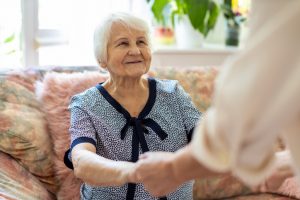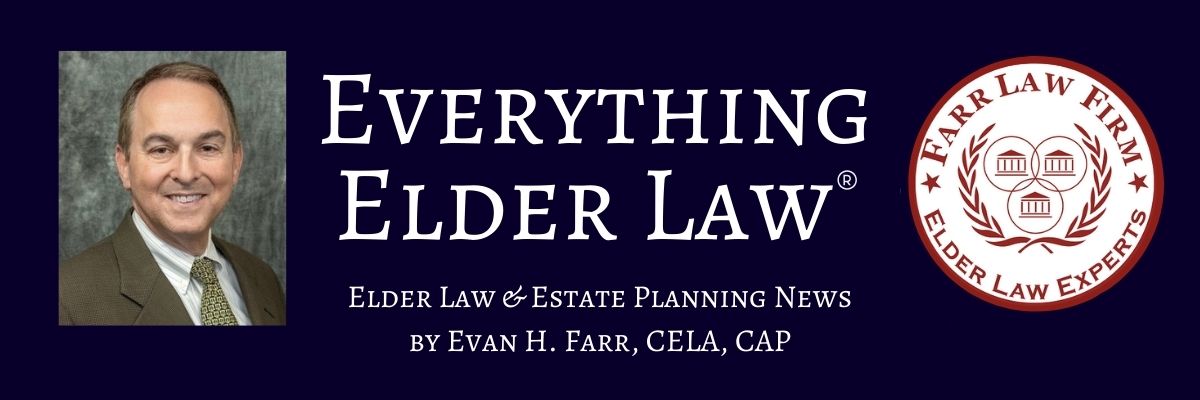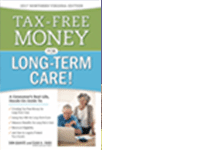 Before the pandemic and even more so during it, social isolation and loneliness have been considered serious health risks for older Americans.
Before the pandemic and even more so during it, social isolation and loneliness have been considered serious health risks for older Americans.
Judith Gimbel worries that isolation is killing her mother, Ida, who she hasn’t seen in years but talks to on the phone often. “I don’t think she’s deteriorating … I know she is,” she says of her 95-year-old mother, who lives in assisted living.
Before the pandemic hit, Ida participated in every activity the facility offered. Judith describes how her mother went down for morning yoga, ate all three meals in the dining room, did crafts, and participated in music programs. Without daily stimulation, Gimbel thinks her mother’s dementia has progressed a lot more quickly than she feels it would have otherwise. “She sometimes doesn’t recognize me, and that was never the case before,” Judith says about her mother. Many others in the same situation agree with her about their loved ones’ declining mental health.
Mental Tolls Have Led to Declines in Physical Health
For many residents, the mental tolls are leading to declines in physical health, as well. During the pandemic, “(t)here was a lot of withdrawal from care,” says Heather Smith, lead psychologist at the Milwaukee Veterans Affairs Medical Center. “And a refusal to eat or take medication or engage in self-care, such as showers or exercise.” She cautions that loneliness and isolation can lead to the following:
- increased weakness, weight loss, and pain perception, which put people more physically at risk. Weakness, for instance, can contribute to falls, which in turn can produce other life-threatening health problems;
- factors that put a person at risk of mortality from all causes, often rivaling the risks of smoking, obesity and high blood pressure;
- higher rates of clinically significant depression, anxiety, frustration, irritability, and suicidal ideation;
- a 50 percent increased risk of developing dementia, a 32 percent increased risk of stroke, and a nearly fourfold increased risk of death among heart failure patients, according to separate studies; and
- an uptick in dementia-related behaviors.
Visitation Is Now Allowed at All Nursing Homes at All Times
This past Friday, updated guidance was released by the Centers for Medicare and Medicaid Services that states “(v)isitation is now allowed for all residents at all times. This update represents our most comprehensive action to bring residents and loved ones closer together,” CMS said in its statement.
After more than a year-and a half of stop-and-go visitation privileges at long-term care facilities, the federal government now wants nursing homes to drop all barriers to visitation. According to CMS and the information above, “(p)hysical separation from family and other loved ones has taken a physical and emotional toll on residents and their loved ones. Residents may feel socially isolated, leading to increased risk for depression, anxiety, and expressions of distress. Residents living with cognitive impairment or other disabilities may find visitor restrictions and other ongoing changes related to COVID-19 confusing or upsetting. CMS understands that nursing home residents derive value from the physical, emotional, and spiritual support they receive through visitation from family and friends. In light of this, CMS is revising the guidance regarding visitation in nursing homes.”
Face Coverings Are Still Required
Although the new CMS guidance offers more freedoms, it reinforces that “visits should be conducted in a manner that adheres to the core principles of COVID-19 infection prevention and does not increase risk to other residents.” It says:
- All residents and visitors should wear face coverings and physically distance during visits to a nursing home where the surrounding community level of transmission is high.
- Facilities can no longer curb the number of visitors, frequency, or length of the visit.
- Visits should still adhere to infection prevention protocols, and physical distancing should still be maintained during peak gathering hours, such as mealtimes.
- Visitors who have a positive viral test for COVID-19, symptoms of COVID-19, or currently meet the criteria for quarantine should not enter the facility.
- Hand hygiene, a face covering or mask, and physical distancing at least six feet between people are still required.
- Instructional signage throughout the facility and proper visitor education on COVID-19 signs and symptoms, infection control precautions, and other applicable facility practices are required.
- Cleaning and disinfecting high-frequency touched surfaces in the facility often, and designated visitation areas after each visit is required.
- Appropriate staff use of Personal Protective Equipment (PPE) is required.
CMS says that it’s “concerned about the transmission of the virus from unvaccinated staff to residents” given that staff vaccination rates remain “significantly lower” than resident rates. However, a new federal mandate, which requires all nursing home staff be vaccinated against COVID-19 by Jan. 4 as a requirement for participating in Medicare and Medicaid programs, aims to “ensure continued safety as facilities continue to open.” The agency also launched a new tool in September to make it easier to compare vaccination rates at any federally funded facility in the country.
Surveyors Are Now Taking a Closer Look
While urging more liberal visitation policy, CMS explained that it is also advising surveyors (federal government officials who inspect nursing homes every year) to take a more critical look at things, such as nursing staff competency, use of antipsychotics, and potential abuse and neglect issues.
In addition, CMS feels that special attention should be given to facilities exhibiting higher infection rates but lower COVID-19 vaccination rates. States that don’t promptly adhere to the new, tougher survey guidelines will risk losing up to 5 percent of their CARES Act pandemic relief funding, the agency warned.
The updated CMS memo on visitation also states that skilled nursing facilities are not allowed to restrict access to surveyors based on vaccination status, nor ask a surveyor for proof of their vaccination status as a condition of entry into the facility.
“CMS is increasing oversight in nursing homes to provide a more focused review of quality-of-life and quality-of-care concerns,” the agency added in a statement. “For example, the memorandum instructs surveyors to specifically review and focus additional attention to the competency of nursing staff, the use of any potentially inappropriate antipsychotic medications, and other areas of care, such as unplanned weight loss, loss of function/mobility, depression, abuse/neglect, or pressure ulcers.”
Use Your Best Judgement
If you have a loved one in a nursing home, you can now visit! Remember, though, to be extra careful, and use your best judgement. If you do not feel comfortable, work with the nursing home to connect you to your loved one using technology such as Facetime or Zoom. This way your loved one won’t feel as lonely and isolated and will know you are there and that you care.
Plan for Loved Ones Who Need Nursing Home Care in the Near Future
If you have a loved one who needs nursing home care or even if your loved one is already in a nursing home, if you haven’t done Medicaid asset protection planning already, the time to plan is now! Please contact us as soon as possible to make an appointment for an initial consultation:
Elder Care Fairfax: 703-691-1888
Elder Care Fredericksburg: 540-479-1435
Estate Care Rockville: 301-519-8041
Elder Care DC: 202-587-2797














Leave a comment
You must be logged in to post a comment.